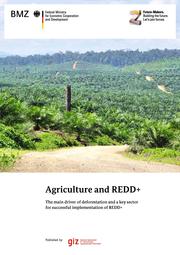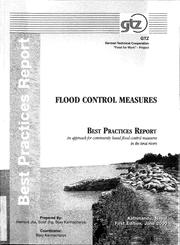Reforestation is the natural or intentional conversion of recently non-forested land to forests, often with a conservation or landscape protection background. As forests facilitate the sequestration of atmospheric carbon dioxide, reforestation measures are widely accepted to mitigate global warming and rebuild natural habitats and ecosystems. Furthermore reforestation functions as anti-erosion and flood-control measure.
Background
Agricultural expansion and intensification may have tremendous environmental impacts. Land-use activities, primarily for agricultural expansion and timber extraction, have replaced many natural forests and now cover 1.9 million km2 worldwide. Agriculture has already cleared or converted 45% of the deciduous forest and 27% of the tropical forest biome (Foley et al. 2011). Croplands and pastures have become one of the largest terrestrial biomes on the planet. Highly managed forests, such as timber plantations in North America and oil-palm plantations in Southeast Asia, have also replaced many natural forests. Many land-use practices (e.g., fuel-wood collection, forest grazing, and road expansion) can degrade forest ecosystem conditions—in terms of productivity, biomass, stand structure, and species composition—even without changing forest area. Furthermore agricultural land-uses indirectly degrade forest conditions by introducing pests and pathogens, changing fire-fuel loads, changing patterns and frequency of ignition sources, and changing local meteorological conditions (Foley et al. 2005 & 2011). As agriculture is the main direct driver of deforestation, it is important to keep in mind that also other relevant sectors, such as mining, transport and charcoal industries, may also be important deforestation drivers (GIZ 2013).
Although deforestation, i.e. the conversion of tropical forests to agricultural land, continues globally, positive developments in many developing and transitioning countries have recently come to light. (FAO 2010). Forest – Conservation measures like the UNFCCC Reducing Emissions from Deforestation and Forest Degradation – Mechanism (REDD) are now integral parts on the international climate policy agenda. REDD basically ascribes a value to the carbon sequestration potential of forests and calls on developed countries to transfer funds to developing countries to preserve those forests to help mitigate climate change. Reforestation measures may be good examples of an Ecosystem-based-Adaptation approach to the consequences of global change (Doswald and Osti 2011).
Facing the challenges of climate change and recognizing the ecosystem services forests provide for agricultural production, reforestation measures engage a special position within the debate of adaptation and mitigation and in particular within the concepts of IWRM (Integrated Water Resource Management) and the Landscape Approach.
Reforestation – Measures for Climate Change Mitigation
An increase in in the global forest cover would tend to mitigate global warming as forests are an important part of the global carbon cycle through net growth and absorbing CO2 - emissions and through the storage of large reservoirs of carbon. Reforestation is one under four major strategies available to mitigate carbon emissions through forestry activities (besides increasing carbon density of existing forests, REDD, expanding the use of forest products). According to Reyer (2009) reforestation, afforestation and avoidance of deforestation can contribute to up to 25% of atmospheric CO2 reduction by 2050 by reducing emissions and increasing CO2 removals through sinks. Besides Climate change mitigation through carbon sequestration, reforestation has different biophysical impacts depending on geographical distribution. As the reforestation - benefits in the tropics are enhanced for example through cloud formation and sunlight reflections, those benefits are limited in boreal regions (Canadell and Raupach 2008) because the low albedo of boreal forests is a positive climate forcing.
Reforestation and Food Security
The recently published study “Dietary quality and tree cover in Africa” by Ickowitz et al. (2014) suggests that deforestation has a long-term negative effect on nutrition. A clear linkage between areas with tree cover and better diet quality has been found with dietary data from demographic health surveys of 93,000 children between the ages of one and five from 21 African countries. Considering that micronutrient deficiency affected over 2 billion people in 2012 (FAO et al., 2012, cited in Ickowitz et al. 2014), the relevance of reforestation gets growing importance.
Reforestation Projects under the Clean Development Mechanism of the Kyoto Protocol
Since the Sixth Conference of the Parties (COP 6) in 2001, The Clean Development Mechanism (CDM) allows industrialized member countries to meet a part of their greenhouse gas reduction obligations through offset afforestation and reforestation projects in developing countries which remove carbon from the atmosphere. The CDM allows emission-reduction projects in developing countries to earn certified emission reduction (CER) credits. These CERs can be traded and sold, and used by industrialized countries to a meet a part of their emission reduction targets. The CDM is the main source of income for the UNFCCC Adaptation Fund, which was established to finance adaptation projects and programmes in developing countries that are vulnerable to the effects of climate change.
Until today 52 Afforestation / Reforestation-Projects have been implanted through the CDM Mechanism.
Problems
Given the many economic, social and environmental benefits these activities offer, the question arises why there are relatively few reforestation projects under the CDM. Thomas et al. (2009) and Nijnik (2012) identified the main constraints for development of reforestation projects which can explain this situation. Financial constraints appear for example due to the length of time it takes to gain revenue from reforestation projects because it takes many years for newly planted forests to yield net sequestration benefits.
The effort of the member countries could also be discouraged because they can only use up to 1% of their required Certified Emissions Reductions (CERs) from Clean Development Mechanism (CDM). Also forestry CERs are excluded from the ETS while it is permissible to trade non-forestry CERs from CDM.
Constraints associated with knowledge, skills and other social factors play also an important role. Problems meeting the demands of the CDM registration process are amongst others the lack of knowledge and technical capacity. As such projects require large areas of land, problems of land tenure and property rights are potential constraints too (Thomas et al.2009; Nijnik and Halder 2012).
Reforestation-Measures for Soil and Water Conservation
As the amount of bare soil one a site is a good indicator of the soil’s vulnerability to erosion and degradation, good soil coverage is an essential element in soil conservation programs.
A vegetation cover reduces the erosive power of impacting raindrops and thus splash erosion, furthermore it reduces the volume of water reaching the soil surface.
In the long term, vegetation influences the fluxes of water and sediments by increasing the soil aggregate stability and cohesion and by improving water infiltration. Therefore anti-erosion measures which include the planting of specific species and reforestation-programs play an important role in the context of water and soil protection. As forest soils store significant amounts of water, floods and droughts are less severe in forest-rich regions.
Forests play a central role in improving water quality and in regulating the regional water cycle. Various studies underline that the hydrological effects of reforestation measures are mainly positive with reduced runoff and erosion, improved microclimate and increased control over nutrient fluxes and decreased movement of water and sediments off-site. Ouyang et al. (2013) highlights the role reforestation plays in reducing flooding and the volume of farmland-derived sediments in waterways. Thus, reforestation could mostly be an effective means to provide multiple benefits such as soil conservation and flood mitigation (Zomer 2006, Trabucco 2008). But whether this is a positive or negative impact on water resources, water management, soil and land conservation, biodiversity, and/or downstream food security, is highly site specific and depends upon climate, soil types, topography, land uses, population densities, existing infrastructures, and tradeoffs with coexisting demands for water and species composition. For example, reforestation with fast-growing conifers decreases the flow of water from catchments and causes water shortage during droughts.
In the dry tropics, forest plantations often use more water than short vegetation because trees can access water at greater depth and evaporate more intercepted water. Newly planted forests can use more water than the annual rainfall, by mining stored water. Extensive afforestation or reforestation in the dry tropics therefore can have a serious impact on supplies of groundwater and river flows.
Therefore reforestation measures such need large-scale, preliminary investigations and local management plans (Zomer 2006; GIZ 1975). For example the GIZ – Manual for Reforestation and erosion control gives practical hints and states the requirements for suitable species in the Phillipines.
Forest and Climate Protection Project in Panay
The project „Forest and Climate Protection Project in Panay (ForClim Panay)“ is implemented by GIZ on behalf of German Federal Ministry for the Environment, Nature Conservation and Nuclear Safety (BMU).
The natural forest of the central mountain range on the Philippine island of Panay is one of the most important carbon sinks in the region. It guarantees the flow of water into most of the rivers on Panay and it is a refuge for endangered species.
Forest conservation therefore plays an enormous role. At the same time, it comes under huge pressure from exploitation. Unsustainable agriculture on the steeper slopes and waste biomass contribute to avoidable greenhouse gas emissions. Deforestation of the mountain range leads to erosion and fluctuating water levels and jeopardizes rice irrigation and drinking water supply in low-lying areas.
The objective is to conserve the remaining areas of natural forests and creating a basis for a sustainable use of the natural resources.
Activities include the formation of an alliance between the provinces and communities concerned; designating and developing species conservation areas as part of decentralised land use planning for the total forested area of 50,000 hectares, participatory planning and embedding the measures in annual community budgets, disseminating environmentally sound agroforestry in the buffer zone, large-scale reforestation and supplying local households with renewable energy, primarily from agricultural waste and wood from reforestation projects.
Partner communities and local households have already established 440 hectares of mixed forest and 450 hectares of agroforestry areas in the buffer zones (https://www.giz.de/en/worldwide/18266.html).
References and further information
- Bonan, G. B. (2008). "Forests and climate change: Forcings, feedbacks, and the climate benefits of forests" Science 320 (5882)
- Canadell and Raupach 2008: Managing Forests for Climate Change Mitigation. In: Science 320, 1456
- Doswald and Osti 2011: Ecosystem-based approaches to adaptation and mitigation – good practice examples and lessons learned in Europe. BFN Skripten 306/2011
- FAO 2010: 2010. Global Forest Resource Assessment. Main Report, Key Findings and Databases. FAO Forestry Paper. Rome, Italy: Food and Agriculture Organisation (FAO)
- Foley et al. 2005: Global Consequences of Land Use. In: Science 309, 570
- Foley et al. 2011: Solutions for a cultivated planet. In: Nature 478, 337–342


- Ickowitz, A.; Powell, B.; Salim, M.A.; Sunderland; T. (2014): Dietary quality and tree cover in Africa. Global Environmental Change 24 287–294
- Lal, R. 2004: Soil Carbon Sequestration Impacts on Global Climate Change and Food Security. In: Science 304, 1623.
- Nijnik and Halder (2012): Afforestation and reforestation projects in South and South-East Asia under the Clean Development Mechanism: Trends and development opportunities. In : Land Use Policy 31 (2013) 504– 515
- Ouyang et al. 2013. Impacts of reforestation upon sediment load and water outflow in the Lower Yazoo River Watershed, Mississippi. In: Ecological Engineering 61:394-406.
- Reyer, C. et al. (2009): Climate change mitigation via afforestation, reforestation and deforestation avoidance –and what about adaptation to environmental change? In: New Forests 38 15-34
- Thomas, S. et al. (2009): Why are there so few afforestation and reforestation Clean Development Mechanism projects? In: Land Use Policy 27 (2010) 880–887
- Trabucco et al. 2008: Climate change mitigation through afforestation/reforestation: A global analysis of hydrologic impacts with four case studies. In: Agriculture, Ecosystems and Environment 126 (2008) 81–97 (Importance of Hydrological Impacts)
- Zomer et al. 2008: Climate Change Mitigation: A spatial analysis of global land suitability for clean development mechanism afforestation and reforestation. In: Agriculture, Ecosystems and Environment 126 (2008) 67–80
- https://www.giz.de/en/worldwide/18266.html